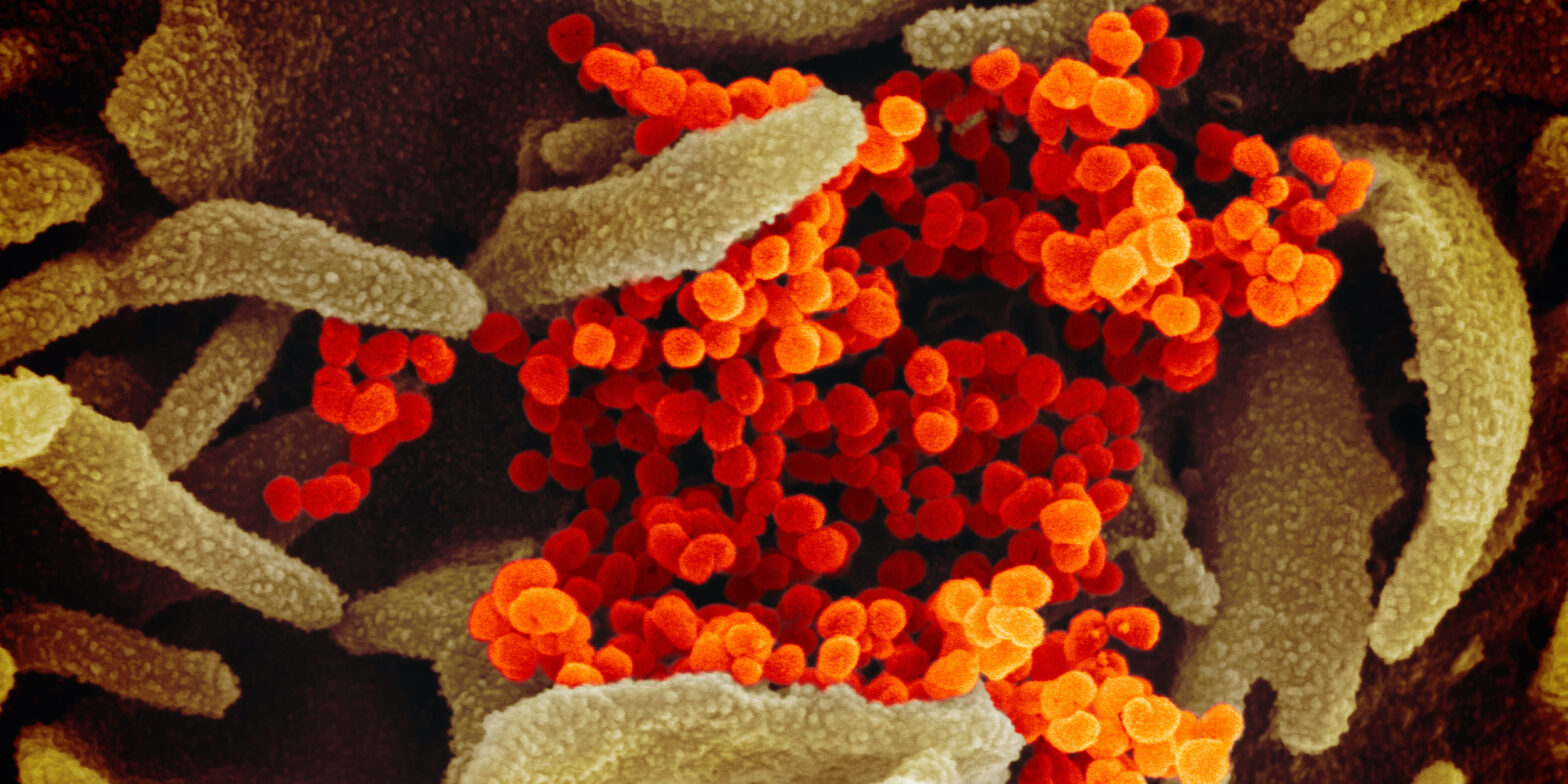Several of the early fears about coronavirus, or COVID-19, seem to be coming to fruition as the disease continues to spread across the world. This week, Italy imposed nationwide travel restrictions, and the World Health Organization declared the virus a global pandemic. In the United States, Trump placed restrictions on travel from Europe to the United States, Wall Street suffered its largest losses since 1987, and sporting events and other large gatherings are being cancelled.
Worryingly, misinformation about COVID-19 is also spreading quickly, with health officials scrambling to fight back against misconceptions about the virus and its origins. So, how do you know if the news you’re reading and sharing on COVID-19 is credible?
Start with national and international healthcare organizations
When looking for the most credible news on COVID-19, a good place to start is by using information from trusted global health authorities like the World Health Organization (WHO) and the U.S. Centers for Disease Control (CDC). These organizations tend to back up their reports with studies and data and while they are a branch of the government they remain a good place to begin your research on the coronavirus.
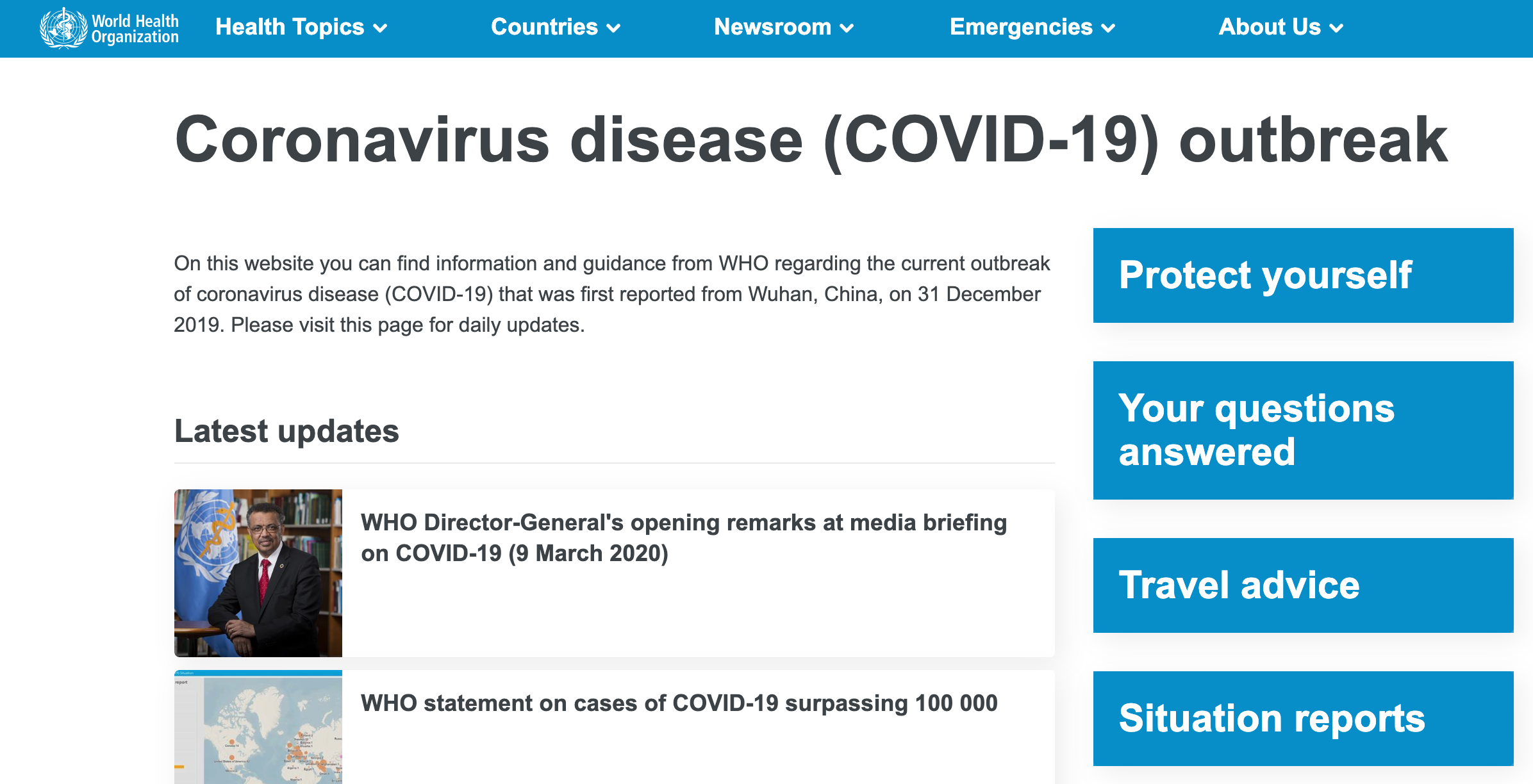
Please check your email for instructions to ensure that the newsletter arrives in your inbox tomorrow.
Stay current
For more up-to-the-minute news, there are several credible resources, including these useful maps from the New York Times. These can be used in tandem with the updates from the health organizations mentioned above to stay informed.
Sharing information from these sources provides many types of beneficial information, including how the disease is transmitted, what the incubation period is, how to prepare your workspace, and how global markets are reacting to the disease.
The Factual just launched a new coronavirus timeline, which showcases the most credible article published each hour from across all major media outlets. This gives you access to a consistent stream of the most well-resourced articles on COVID-19.
The Factual’s Coronavirus Timeline
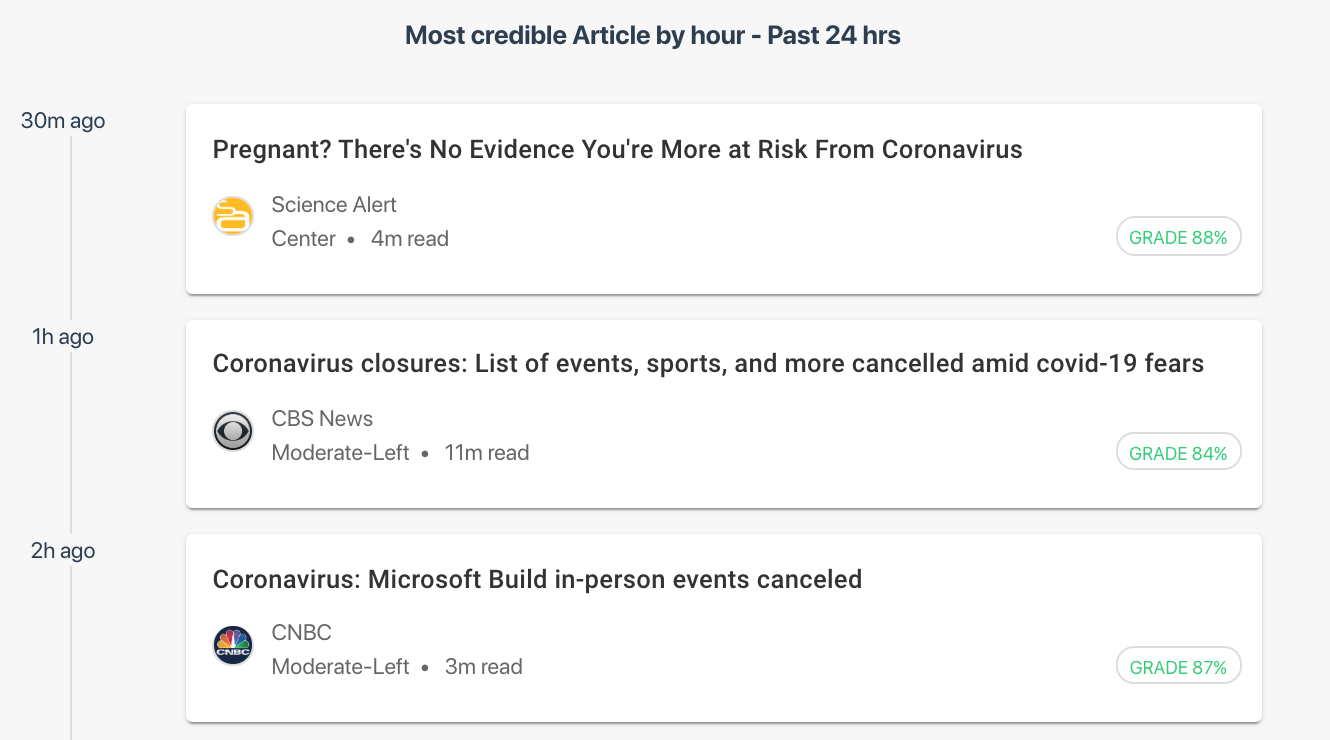
There will also be essential information about your local communities that national outlets will not be a good for. With that in mind, consider using Twitter to follow municipal and state government accounts, local newspapers and news agencies, and other local businesses. These accounts may have up-to-the minute updates about community events, locations to avoid, health and emergency services, and other resources. Google News also has a useful feed for local news. Such local updates may be critical as circumstances rapidly may change on the ground.
Avoid unfamiliar sites
The vast majority of false news originates on unfamiliar news sites or on social media — often private Facebook groups, Whatsapp networks, or Reddit communities. Fact-checking sites like Snopes and Factcheck.org do a good job catching the most popular hoaxes, but the hoaxes can be hard to keep up with because of their sheer volume. The cybersecurity firm Checkpoint says 4,000 new sites have sprung up with information on coronavirus since January 1, 2020, of which “3 percent were considered malicious and another 5 percent were suspicious.”
The best defense is to avoid trusting news from any source that you’re not familiar with. Some sites are styled to look like other legitimate sites so you have to look carefully at the URL address in your browser to ensure you’re not being duped.
Resources like Media Bias Fact Check or The Factual’s chrome extension can automatically check if a URL is a reputable news site and save you time.
Share only highly credible stories
A lot of news spreads via social media and sharing, and for some people this is how they get most of their news. That means every one of us is a news source, and it is incumbent on us to share credible news.
With 500+ articles published every day on coronavirus, the vast majority are neither outright false nor official information from a government organization. Rather many are merely poorly substantiated or not very informative. Many of us share stories after just reading a headline, so how can we ensure we are sharing credible and useful news?
Low credibility stories share some common traits:
- Sites that have mixed historical reputation (aka tabloids)
- Opinionated or click-bait headlines
- Few sources, often uncredited
- Author who is not a subject matter expert

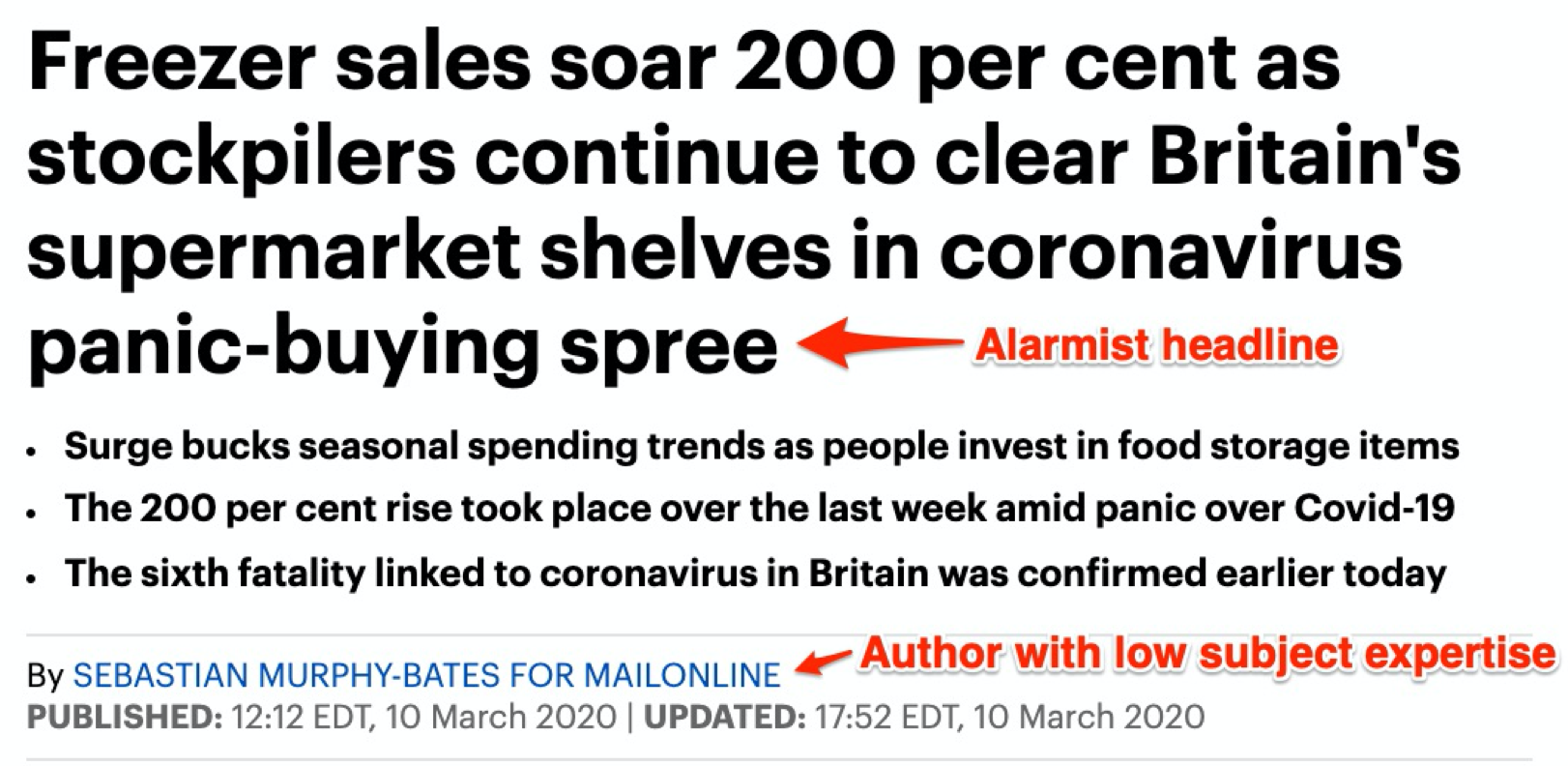

If you’re pressed for time (aren’t we all!,) it’s hard to apply this level of rigor to every article we come across. The guidelines above are applied automatically via The Factual’s credibility algorithm so you know if the story you’re about to share will be useful to your network.
Please check your email for instructions to ensure that the newsletter arrives in your inbox tomorrow.
Every day, The Factual crawls over 10,000 news articles from top news outlets, assessing the credibility of articles based on each article’s hosting site, author, sources, and writing tone. Those insights are then used to inform our daily newsletter and are aggregated on our site.
If you already have preferred news sites, The Factual’s browser extension can help you find the best articles by instantly assessing every news story as you read it.
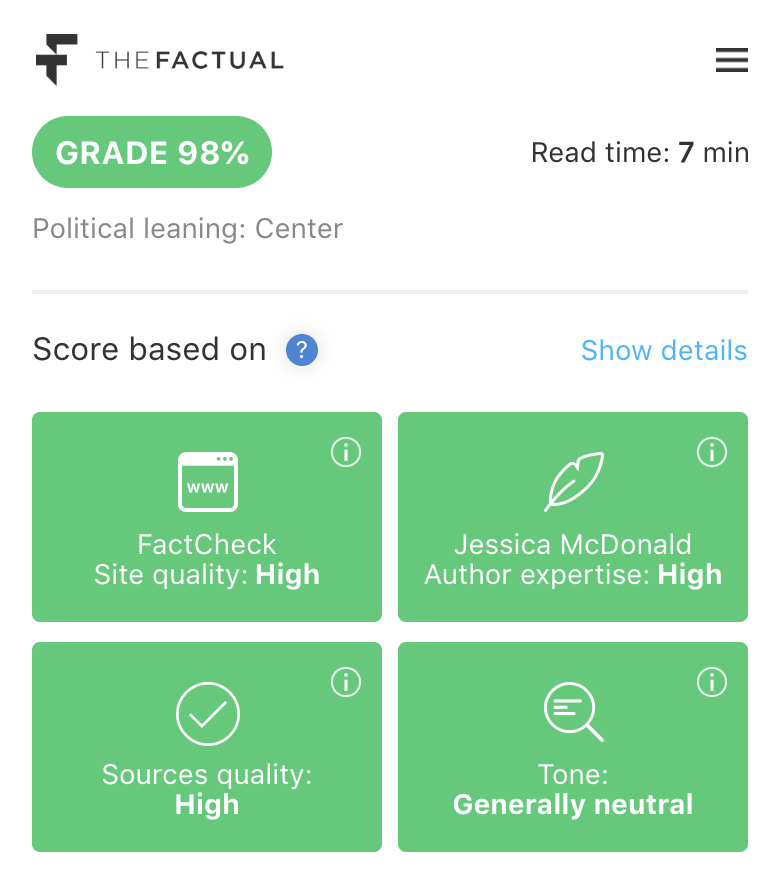
The Factual’s Credibility Grade details for a FactCheck.org article
In the context of COVID-19, that means quickly finding the most informative news — like this one from Scientific American or like this one from FactCheck.org (analyzed by our browser extension above). Each of these articles is written by people with expertise in health and science, often features dozens of sources and direct quotes, is neutral in writing tone, and comes from reputable sites with distinct histories of producing credible articles.
With most of us getting news from friends and family during the COVID-19 epidemic it’s up to each of us to consume and share news mindfully, rejecting misleading and harmful information and sharing news that helps to build resilient, informed communities. Hopefully, this resource guide and tools from The Factual can help you make the right decisions to protect you and your community safe.
*An earlier version of this article listed the website Worldometers as a good source for COVID-19 data. Given new information, we can no longer recommend that site as a credible source.

